Page 7 of 14
AW Insect Book: Moths (Lepidoptera) Noctuidae Noctuinae
Posted: Mon Oct 20, 2014 5:34 am
by Toko
Noctuinae is a subfamily of noctuoid moths, placed in family Noctuidae.
The subfamily Noctuinae was defined by HAMPSON (1903) [under the name Agrotinae] as trifid noctiuids with spines (actually heavily sclerotised setae) on the tibiae. KITCHING and RAWLINS (1998) redefined the Noctuinae on the basis of the distinctive wing folding mechanism of the adults in which the wings are held flat over the back and overlap broadly so that the costa of the two forewings are largely parallel to each other and to the sides of the body. Most other noctuids hold the wings roof-like over the body with the posterior margins of the forewings parallel so that the outline of the moth at rest is an elongated triangle. In terms of larvae the subfamily is mainly characterised by the relatively short, flat spinneret with the upper apical margin (occasionally the lower also) fringed or lacerate
AW Insect Book: Moths (Lepidoptera) Noctuidae Noctuinae
Posted: Mon Oct 20, 2014 5:37 am
by BluTuna
Hypenine Snout Moth Hypena obacerralis
Family: Noctuidae. Subfamily: Noctuinae
or: Family: Ebreidae. Subfamily: Hypeniinae
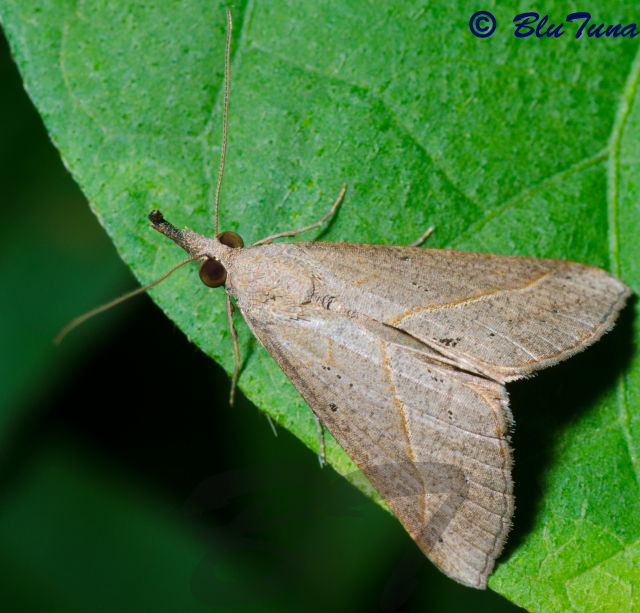
© BluTuna
Garden in Johannesburg
Description
This moth has grey wings with a diagonal line from near the wingtip to halfway along the rear edge of each forewing. Wingspan: about 2 cm.
Distribution
It is found throughout Africa, the Middle East and South Asia.
Links:
African Moths
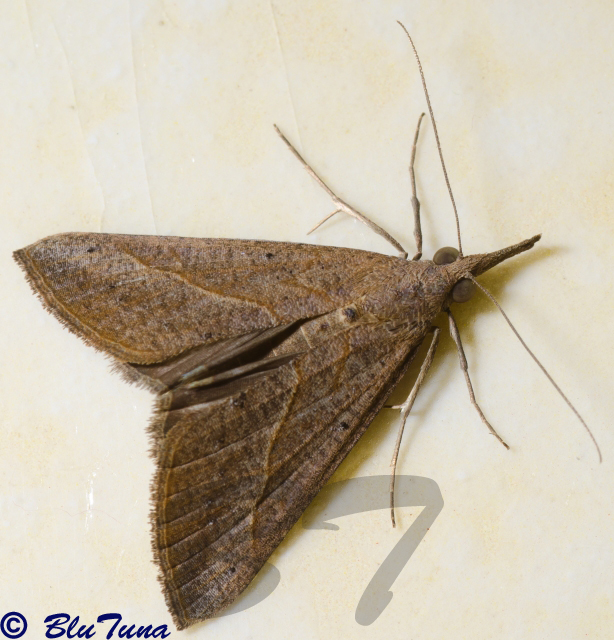
© BluTuna
Garden in Johannesburg
AW Insect Book: Moths (Lepidoptera) Noctuidae Plusiinae
Posted: Mon Oct 20, 2014 5:46 am
by Toko
Plusiinae is a subfamily of noctuoid moths, placed in family Noctuidae. The forewings are triangular with a characteristic hook or falcation to the dorsum at the tornus. The forewing markings usually include a central pale, often metallic looking maculation. The thorax and anterior of the abdomen have a dorsal crest of tufts of scales that are of a similar colour to the forewings. The Plusiinae occur in all major climatic regions of the world.
AW Insect Book: Moths (Lepidoptera) Noctuidae Plusiinae
Posted: Mon Oct 20, 2014 5:49 am
by BluTuna
Plusiine Moth Ctenoplusia dorfmeisteri, Plusia dorfmeisteri
Family: Noctuidae. Subfamiliy: Plusiinae
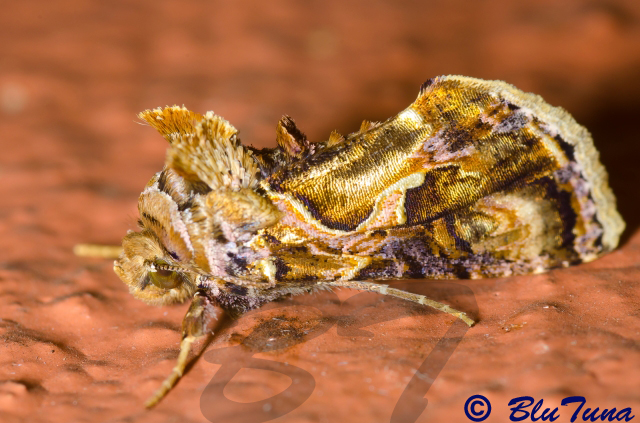
© BluTuna
Garden in Johannesburg
Description
It has a wingspan of 30 mm.
Distribution
Ctenoplusia dorfmeisteri is found in western, central and southern Africa, where it's known from Congo, Nigeria, Gabon, Ghana, South Africa, Mauritius, La Réunion and from Yemen.
Links:
African Moths
AW Insect Book: Moths (Lepidoptera) Noctuidae Plusiinae
Posted: Mon Oct 20, 2014 5:52 am
by BluTuna
Golden Twin Spot Chrysodeixis chalcites
Family: Noctuidae. Subfamiliy: Plusiinae. Tribe: Argyrogrammatini
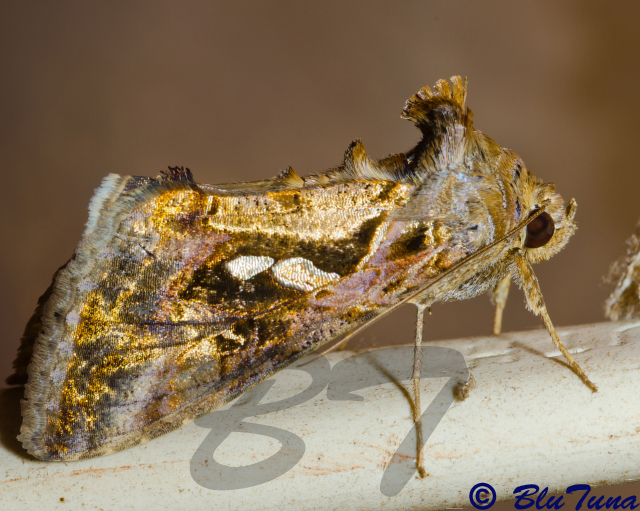
© BluTuna
Garden in Johannesburg
Description
The length of the forewings is 15–18 mm. Forewing dark pinkish brown with metallic gold blotches.
Distribution
Widespread and common in Africa, southern Europe and the Middle-East.
Links:
https://www.africanmoths.com/pages/NOCT ... lcites.htm
AW Insect Book: Moths (Lepidoptera) Noctuidae Plusiinae
Posted: Mon Oct 20, 2014 5:54 am
by BluTuna
Golden Plusia Moth Thysanoplusia orichalcea, formerly
Trichoplusia orichalcea
Family: Noctuidae. Subfamily: Plusiinae. Tribe: Argyrogrammatini
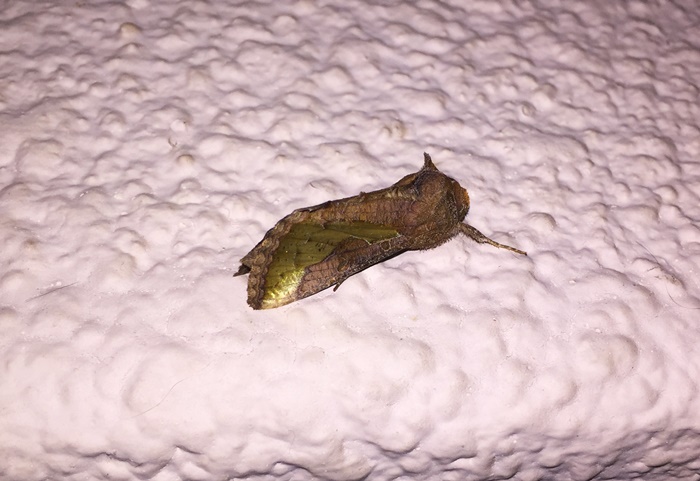
© Flutterby
Johannesburg April 2020

© BluTuna
Garden in Johannesburg

© BluTuna
Garden in Johannesburg
Description
The wingspan is 36–44 mm. The forewings of the adult moth are brown, and each has a beautiful golden patch. The hind wings are fawn coloured, darkening towards the margins.
The Caterpillar of this species is a green looper with a yellow dorsal line.
Distribution
Algeria, DRCongo, Egypt, Eritrea, Ethiopia, Gambia, Ghana, Kenya, La Reunion, Libya, Madagascar, Mauritania, Morocco, Nigeria, Senegal, Somalia, South africa, Tanzania, Uganda, Zambia, Zimbabwe.
Widespread throughout South Africa.
Habitat
Most natural and disturbed areas, including gardens.
Links:
African Moths
Africa Wild Insect Book: Moths (Lepidoptera) Erebridae
Posted: Thu Oct 23, 2014 8:43 am
by Toko
Family Erebridae
Like Noctuidae, the family Erebidae is difficult to define morphologically in a manner that can be applied within a dichotomous key. The traditional noctuoid families Lymantriidae and Arctiidae ar classed as subfamilies here. In the remaining subfamilies the forewings are generally broader than in the other families. The hindwing venation is usually quadrifine. Erebidae are more likely to have patterned hindwings, and possibly all genera where the forewing pattern is continued onto the hindwing are erebids.
A sharply angled forewing postmedial line, associated with a darker triangle or trapezium, with its base along the costa that is placed between it and the submarginal line or the apex, may serve to identify some erebids.
AW Insect Book: Moths (Lepidoptera) Erebridae Arctiinae
Posted: Thu Oct 23, 2014 8:58 am
by Toko
Arctiinae is a subfamily of noctuoid moths, placed in family Erebridae. Adult arctiines are often visually striking, with bright patterns and aposematic coloration. Antennae half body length, comb-like in male, simple in female.
AW Insect Book: Moths (Lepidoptera) Erebridae Arctiinae
Posted: Thu Oct 23, 2014 9:05 am
by Toko
Maid Alice Moth Amata alicia
Family: Erebridae. Subfamily: Arctiinae.
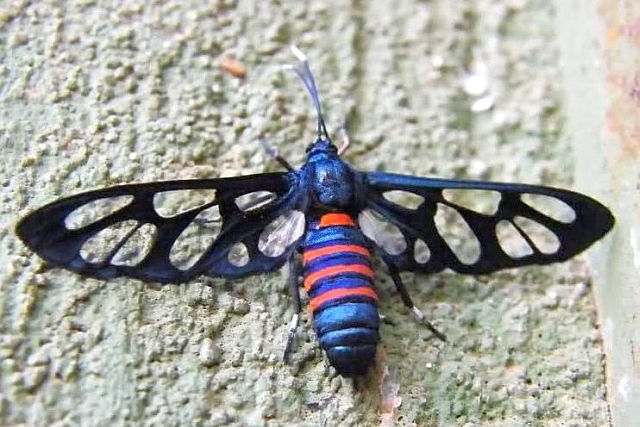
© serval
Shingwedzi, Kruger National Park
Description
This is a day-flying moth with lare narrow fore wings and reduced hind wings. They are known to be very sluggish and slow flying.
Wings black with clear spots. Body blueish with orange bands.
Very similar to
A. cerbera. Distinguished by the white frons (white spot on the head) and white segments in the legs.
The larvae are short and cylindrical with tufts of long hair and normally found on grass.
Distribution
Widespread from Morocco to Namibia, Botswana, Zimbabwe, Mozambique and KwaZulu-Natal, South Africa.
Links:
African Moths
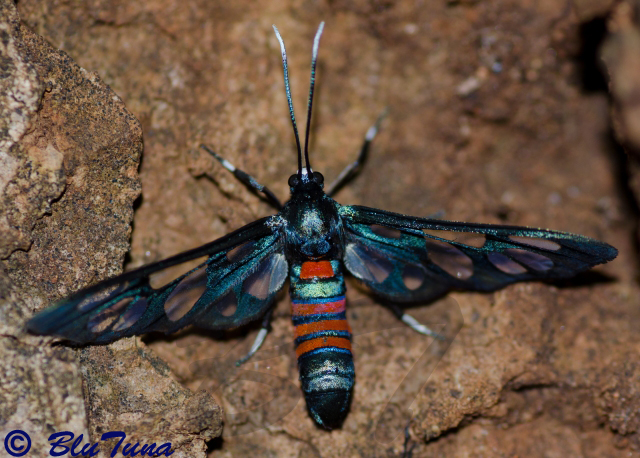
© BluTuna
Kruger National Park
AW Insect Book: Moths (Lepidoptera) Erebridae Arctiinae
Posted: Thu Oct 23, 2014 9:12 am
by nan
Cool Moth Amata kuhlweini
Family: Erebridae. Subfamily: Arctiinae.

Kruger National Park, Mopani
Distribution
South Africa, Tanzania
Links:
African Moths
 © BluTuna
© BluTuna © BluTuna
© BluTuna © BluTuna
© BluTuna © BluTuna
© BluTuna © BluTuna
© BluTuna © BluTuna
© BluTuna © serval
© serval © BluTuna
© BluTuna